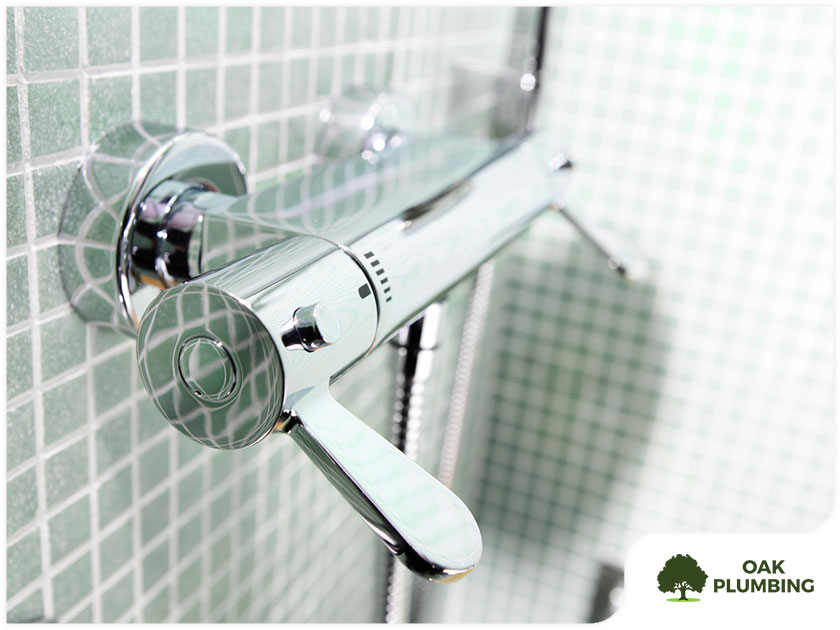Being able to ake a relaxing shower is important, but your daily shower routine may often start with a three-minute battle with your faucet as you search for just the right water temperature. If you’re wondering why you’re struggling with this issue daily, you should know that it’s partially due to the type of shower mixing valve you have. Chances are you’re using a pressure-balancing mixing valve. As a trusted local plumbing expert, we recommend switching to a thermostatic mixing valve. To understand why, let’s take a closer look by comparing these valves and how they operate differently.

How a Pressure-Balance Valve Works
A pressure-balance valve features just one handle controlling both volume and temperature, as well as a dial or set-screw that sets the stop-point for the handle. The pressure is balanced by either a sliding disc on a piston or a spool that reacts to changes and maintains the pressure ratio.
For instance, when you flush the toilet while someone is rinsing, cold water is sent to the toilet tank, reducing the cold water pressure arriving at the shower valve. The mechanism inside the pressure-balance valve will move to reduce (or cut off) the hot water, which maintains the balance between hot and cold flows.
Keep in mind that a pressure-balance valve doesn’t exactly pay attention to temperature, so with the valve set at maximum temperature and the handle turned all the way to “hot”, the water coming out of the shower will be as hot as the water heater has to offer or even higher.
How a Thermostatic Valve Works
A thermostatic valve has two controllable handles: one for the volume, and one for the water temperature. This is because thermostatic valves react to the temperature, not the pressure of the water. With this valve, you can change the flow volume without affecting the temperature, which makes showering much more convenient. This means you can easily turn down the flow while shampooing or shaving. This is possible due to a wax element inside the valve that expands or contracts in reaction to heat.
When water exceeds the maximum set temperature, the wax element expands to reduce the flow of hot water and allow more cold water into the mix. Should either the supply of hot or cold water fail, the valve will automatically close off flow from the other side.
Why You Should Switch to a Thermostatic Mixing Valve
The advantage with thermostatic valves is that you get to directly control the output temperature of the water. While your water heater can be set to 140° F to protect against bacterial contamination, the water coming out of your shower head can always be 100° F or any other safe temperature you choose, provided a maximum output temperature is set on the valve. When properly installed by the best plumber in your area, a thermostatic mixing valve can also provide you these benefits:
-
Direct control of water flow – Having direct control over the water flow means you can increase or decrease it to your liking. This option allows homeowners to conserve water as well while shampooing or soaping up. This is much better than a pressure-balancing valve, which doesn’t offer any control over water flow.
-
Consistent Water Pressure – Since a thermostatic valve controls the water flow, it also prevents a drop in water pressure when other water-using appliances are in use while you’re showering, such as the toilet.
When it comes to installing a new thermostatic mixing valve or scheduling a leaking kitchen faucet repair, consider hiring Oak Plumbing. Give us a call at (800) 397-3799 for more information. You can also contact us through this convenient online form. We serve Vacaville, Benicia, and surrounding areas in CA.
The post Getting the Right Temperature for Your Shower appeared first on Oak Plumbing.
from Oak Plumbing https://ift.tt/3ciMT6g
via IFTTT

No comments:
Post a Comment